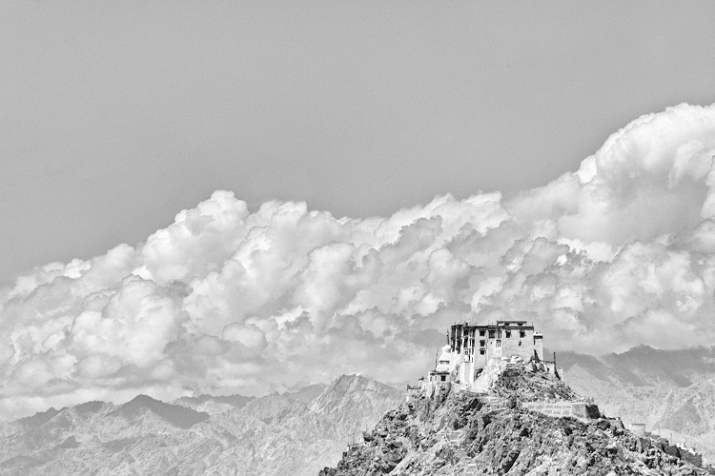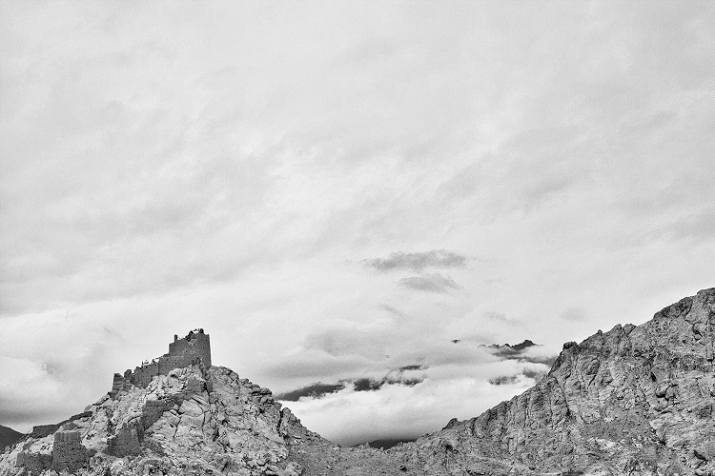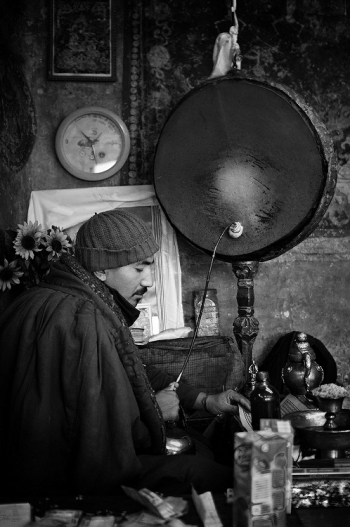Ladakh – The Beauty of Spaciousness
By Dharma Eye: Images and text, Victoria Knobloch
Buddhistdoor Global
| 2015-03-13 | In September 2014, I traveled to Ladakh in northern India to explore and create some photographic essays of the people and culture there. Ladakh has often been called “Little Tibet,” as almost half the Ladakhis are Tibetan Buddhists and the feel and look of the land and culture are very similar.
There are many wonderful Buddhist monasteries (T. gompa) throughout Ladakh, such as Likir Monastery, Hemis Monastery, Stok Monastery, Rizong Monastery, and Phyang Gompa. These gompas are cultural and architectural marvels, enchanting every pilgrim or visitor. Most are ancient and world renowned. They are home to spiritual communities of monks or nuns, who devotedly practice their religion there. The monasteries in Ladakh are also educational institutions, and play a central role in the life and economy of the local community. Ladakh’s annual religious festivals are celebrated at the monasteries as well. These are very colorful, with masked dances and ceremonies that attract both pilgrims and tourists in large numbers. Although first-time visitors may view them as folkloric and colorful events, such traditions and rituals are actually highly symbolic and full of meaning, and are intended for spiritual development.
Buddhism first came to Ladakh in the 3rd century BCE from southern India, so the tradition is firmly rooted in the region itself. Nevertheless, over the centuries, monks from Ladakh have gone to neighboring Tibet for higher religious education and instruction, and the monasteries in Ladakh play an important role in cultivating and preserving Tibetan Buddhist culture. In order to maintain this precious tradition, young boys are sent to live in the monasteries, where they receive food, shelter, and education. In return, the monks take care of spiritual ceremonies, weddings, funerals, and other rituals. Later on, some of the monks engage in advanced academic training in order to preserve the Buddhist teachings. The practice of sending a son to a monastery is also helping to control population growth in the region.
According to John Ruskin, “Nature is painting for us, day after day, pictures of infinite beauty, if only we have eyes to see them.” Well, this is not difficult in Ladakh! The landscape is enormously beautiful, and very like that of Tibet. For a photographer, it is paradise. The landscapes are simply amazing; nature has clearly blessed this place. The breadth and vastness of this mountainous region are perfectly suited to the study and practice of the Buddhist view of the vastness and spaciousness of mind. Buddhism is primarily concerned with expanding one’s inner space, and the landscape of Ladakh acts supportively to this intent. Many great masters have blessed this beautiful region, and if you ever journey to Ladakh, you can follow the trail of their blessings by visiting their inspiring legacy of monasteries, palaces, and stupas. One may also go on pilgrimage as a practitioner. With its incredible heights, Ladakh can be a transformative experience that has the potential to release energy and build fortitude. All is so spacious, you can deeply inhale and exhale and feel the freedom within.
We all need different kinds of inspiration and encouragement to be kind and of benefit to others, and Ladakh definitely has the capacity to activate these qualities. It is truly a holy place. Especially when one forms an auspicious connection, this sacred, transformative aspect reveals itself. The stark, stunning beauty speaks for itself.
I encourage everybody who feels drawn to do so to undertake the journey and visit Ladakh. To arrive is to fall in love with it.
Victoria Knobloch is a member of Dharma Eye – The Buddhist Photographer collective. To learn more about Dharma Eye and Victoria’s work as a photographer, visit Dharma Eye. 


















